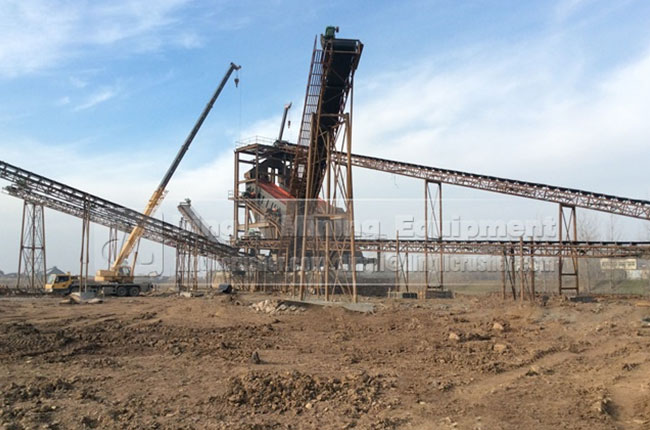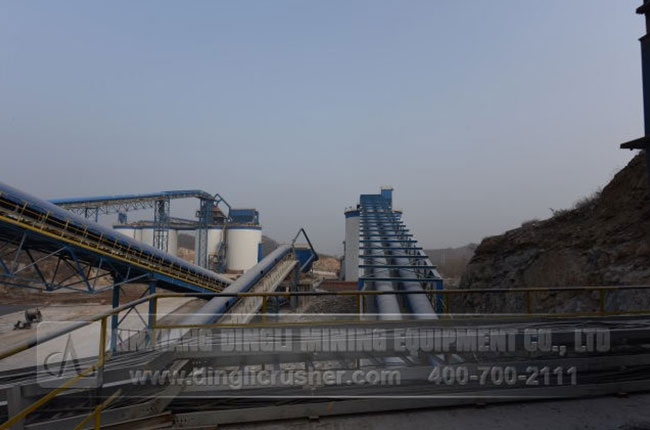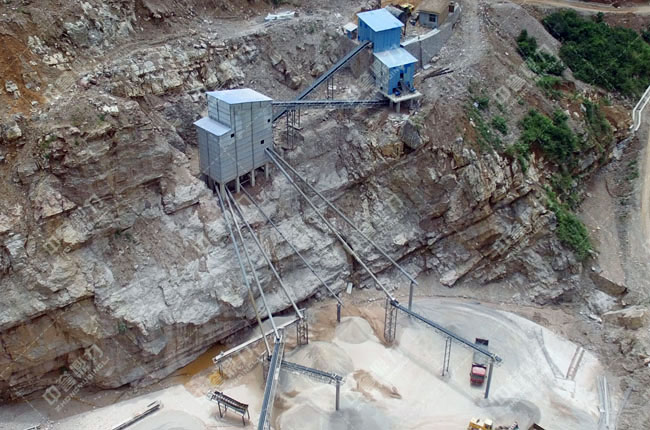 Sand Aggregate IndustryComprehensive Service Provider
Sand Aggregate IndustryComprehensive Service Provider Sand Aggregate IndustryComprehensive Service Provider
Sand Aggregate IndustryComprehensive Service Provider| Model | CS75D | |
| Mantle Diameter | 914(3') | |
| Cavity Type | Fine Type | Coarse Type |
| Closed Side (mm) | 13 | 33 |
| Open Side (mm) | 41 | 60 |
| Discharge Size (mm) | 3 - 13 | 3 - 16 |
| Processing Capacity (ton/hour) | 27 - 90 | 27 - 100 |
| Spindle Rotation Speed (r/min) | 580 | |
| Power (kW) | 75 | |
| Weight (t) | 15 | |
| Overall Dimensions (mm) | 2821×1880×2410 | |
*Note: The processing capacity of the CS75D cone crusher may vary with different materials and feeding sizes.

There are hammer crushers placed side by side in the opposite direction. The raw materials and unqualified materials are conveyed into crushers through transmission pipeline for fine material shape. This production line is wholly designed b

The civil engineering and process layout of this production line are both self-constructed by Xinxiang Dingli besides all the equipment selected are produced by Dingli.

Work Process The large limestones are first crushed by primary crusher of PCZ hammer type then the crushed stones are processed by two sets of 3YKZ2470 vibrating screen for classification of materials in various sizes. At last the curshed stone th
The CS75D cone crusher consists of several crucial components. At its heart is the moving cone, which is connected to the main shaft. The fixed cone is positioned opposite the moving cone, and together they form the crushing chamber. The drive system, including elements like belts, pulleys, and gears, is responsible for transmitting power to the moving cone. Additionally, there are support structures like the frame and auxiliary systems such as lubrication and hydraulic mechanisms that ensure smooth operation.
When the crusher is powered on, the electric motor starts to rotate. The motor's rotational energy is transferred through the drive system. The belts and pulleys work in tandem to increase or decrease the rotational speed as needed. This power then reaches the gears, which further transmit it to the eccentric sleeve. As the eccentric sleeve rotates, it imparts an eccentric motion to the main shaft. Consequently, the moving cone begins to move in an orbital pattern around the fixed cone.
The material to be crushed is fed into the top of the crushing chamber through the feed opening. The feed opening size varies depending on the cavity type, with the fine cavity having a different size compared to the coarse cavity. Once inside the chamber, the material is trapped between the moving cone and the fixed cone. As the moving cone orbits, it alternately approaches and moves away from the fixed cone. This cyclic motion subjects the material to intense compressive forces. The material is continuously crushed, squeezed, and sheared under these forces, gradually reducing its size.
The size of the discharge opening determines the final size of the crushed material. For the CS75D, the fine cavity has a discharge size range of 3 - 13mm, while the coarse cavity has a discharge size range of 3 - 16mm. The crusher's design allows for adjustment of the discharge opening to control the output particle size. As the material is crushed to the desired size, it passes through the discharge opening at the bottom of the crushing chamber and is then collected for further processing or use. The continuous operation of the moving cone and the consistent feed of material ensure a steady stream of crushed output.
We are present worldwide and always here to help.
Get in touch today!